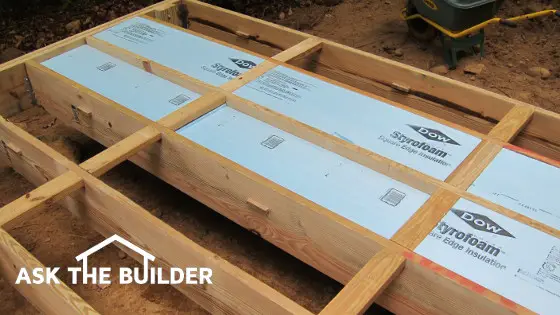How to Insulate a Crawl Space Floor

This builder thought ahead and installed the insulation in this crawl space before the floor sheating was applied. Photo Credit: Tim Carter
Floor Insulation
DEAR TIM: I want to make my house more comfortable, but I have a crawl space. The access under the floor is not bad and the soil seems damp.
What are my options when it comes to insulation that I can install myself since money is very tight right now? I've been told I can save money right away. Is that true?
What should I do about the dampness in the crawlspace? Debbie S., Manchester, TN
DEAR DEBBIE: Insulating the floor in your home will absolutely make you more comfortable. Once you repay yourself in energy savings for the cost of installing the insulation, you'll really start to save money on your fuel bills.
Before we discuss insulation products, let's talk about saving money. Many people are bamboozled by salesmen and companies all the time. I want to go on the record about true energy savings and payback.
Frequently, you'll see ads or hear sales pitches that might say, "Save 35 Percent on Your Energy Bills Now!" Guess what? You don't really start to save money on fuel or electric costs until such time as you have repaid yourself all of the money you spent to achieve the savings. You pay yourself back each month with the extra money you would have spent on fuel.
Here's an example. Let's say a salesman tells you that if you install his energy-savings product you'll save 35 percent on your heating bills. Let's assume he's telling the truth. The first thing to do is to determine what you spend to heat your home in a year. You can do that by studying your utility bills.
For sake of discussion, let's say you spend $1,200 a year on heating fuel. You'll save $420 per year if you cut your fuel bills by 35 percent. Let's say the product you're purchasing to achieve these savings costs $2,100.
Doing simple math, you'll NOT see any true savings for at least five years. It will take you five years (5 X $420 = $2,100) to recapture in fuel savings the $2,100 you spent on the product. If fuel prices go up in the five years, you'll start saving sooner. But if fuel prices drop, it will take even longer to see real savings.
You have a few options when it comes to DIY insulation products. You'll have to do the math to see which one is the best deal when it comes to R-factor. That's how the performance of insulation is measured. Create a small spreadsheet and find out how much it costs per square foot per R-value for each insulation type. Some insulation products cost much more than others per square foot when you compare them on the basis of R-factor. Be sure you do your math correctly.
Look at fiberglass, closed-cell rigid foam, rock wool, and cellulose insulation that comes in batt form. Be sure you take into consideration any building code requirements as some insulation types, like rigid foam, might have to be covered to meet the fire code. Many a house has burned down when a workman or homeowner started a fire in a crawlspace using a torch. The flame ignited the actual insulation or the insulation's paper facing.
I recently used closed-cell foam to insulate a crawl space. I actually installed the rigid boards before the floor sheathing was installed. This way I was never crawling around on my back in a tight, damp crawl space. One advantage of closed-cell rigid foam is it not only insulates, but it's also a highly effective vapor retarder. Moisture from the soil constantly wants to make its way up into your home, so it's important that you install a vapor barrier or retarder between the soil and the house.
My guess is you'll discover that working with fiberglass batts that have no facing on them will do a great job for you at an affordable price. Once again, check the pricing.
The biggest surprise may be that you can get the floor insulated by professionals for the same or slightly more than what you'd spend on the material at a home center. Professionals purchase the actual insulating materials at deep discounts and can be competitive when they have their employees install the material. Be sure to get three quotes.
If you decide to go with the fiberglass batts, rock wool or cellulose, you'll need to install a high-performance vapor barrier over the damp soil in your crawl space. These materials are different from the regular clear or black poly you often see at hardware stores or home centers.
The high-performance products are usually made by cross laminating two sheets of the plastic creating a sandwich of plastic. This method allows very little vapor to pass through the product and often makes them more resistant to punctures.
You can watch a video that shows closed cell foam being installed in a crawl space floor. Simply click on this link to watch the "foam insulation board video".
Column 961
One Response to How to Insulate a Crawl Space Floor